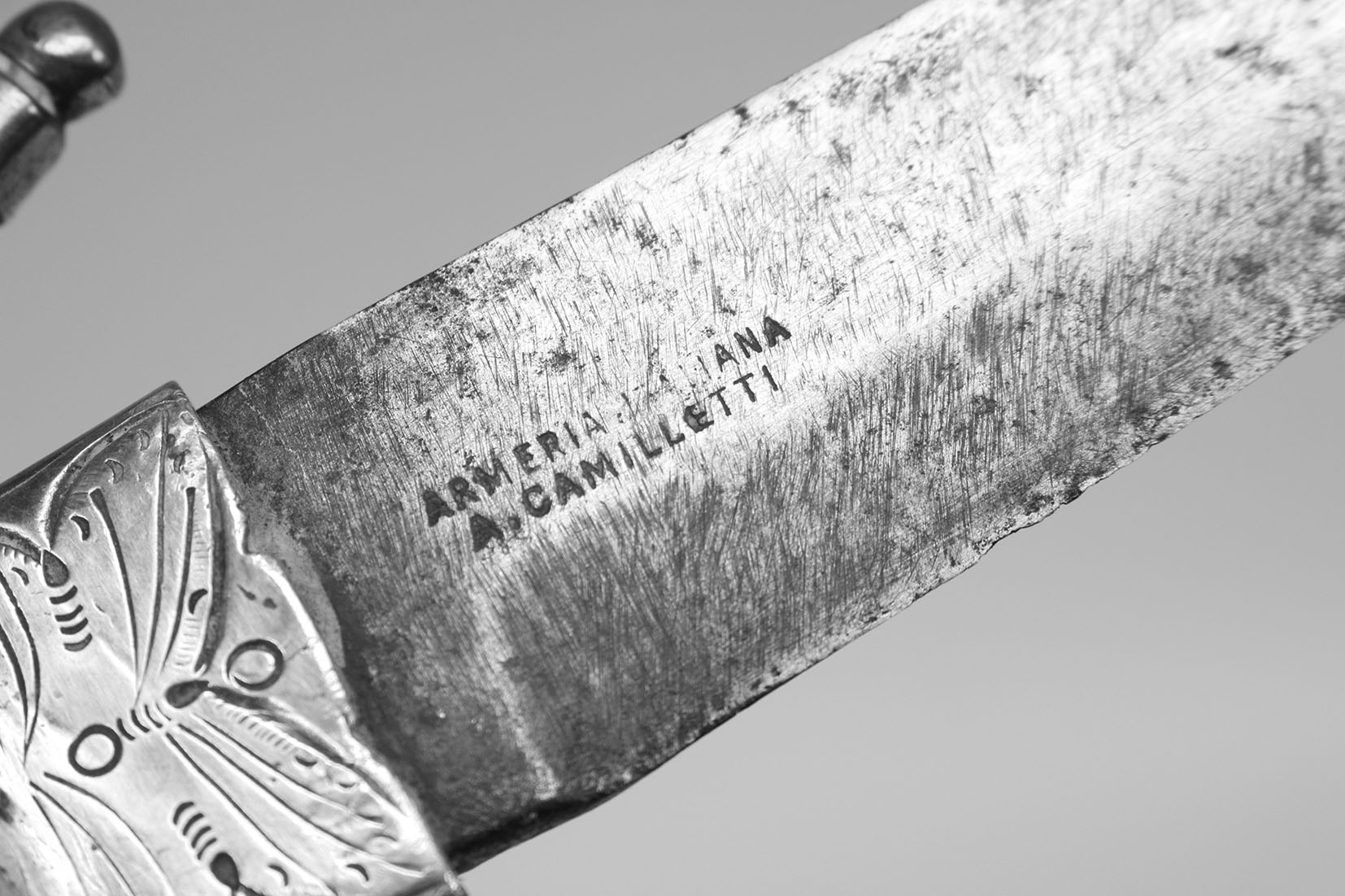The study of ancient Creole knives brings us permanent surprises. To the traditional and fairly well-studied brands such as Arbolito, Dufour, Defensa and some others, from time to time we add stamps about which we know little and that test the investigative capacity of historians in the industry. Indeed, when we observed the knives exhibited in the beautiful exhibition organized by Segundo Deferrari at the Las Lilas Museum in San Antonio de Areco, at the end of 2022, a facón with a total length of 39 cm and a 26 cm blade appeared, with its blade minted «Italian Armory. A. Camilletti", dated in the second half of the 19th century [1].
At that time, we did not remember any mention of this armory. The colleagues we consulted did not have it well in mind either. [2] However, digging through papers and computer file folders, an old record appeared in which the brief list of armories in Córdoba was reproduced according to the book Commercial Directory of the South American Republics published in 1897:
«August Juan Bautista.
Camilletti Augusto.
Gregory Antonio.
Risler and Elmiger. (Swiss Armory founded in 1888).
From this first reference, the history that we have been able to reconstruct is the following: Augusto Camilletti was born in 1864 in Potenza Picena, Macerata, Marche, Italy. He married Teresa Ciaciarelli (born in 1868) in the very young city of La Plata in 1886, and a few years later we find him living in the city of Córdoba. They were his children, Augusto, born in 1907, and Teresa, in 1917.
Census return from 1895 with the registration of A. Camiletti (with an l), his wife and children.
In the 1895 national census, he is recorded as a gunsmith, married with two children. In a commercial guide from 1914, Teresa, now a widow, appears with a business in San Martín 52, the commercial center of the city of Córdoba. Probably upon Teresa's death in 1917 the business was closed, since the Córdoba business guides dated in later years no longer mention the surname Camilletti.
Unfinished facón blade with the mark of the Italian Armory. Alberto Guido Chester Collection.
Two stamps of this signature are known, that of the facón that we have in our collection with capital letters elaborated with English reminiscences and the simpler one of the facón exhibited in the Las Lilas Museum. The first, with the indication of location (Córdoba), the second no.
Finally, these are pieces of historical interest, imported from Europe at the end of the 19th century or the first years of the 20th and that contributed to making the gaucho's hands skillful instruments.
Notes:
1. Segundo Deferrari, El Cuchillo Criollo, Las Lilas Museum, San Antonio de Areco, 2022, p. 93.
2. Thanks to Santiago Fiorito, Daniel Periales, Ezequeil Gabrieli and some others who guided us in the search. Santiago found Camiletti in a guide to Italian immigrants in Córdoba around 1895.
* Special for Hilario. Arts Letters Trades

